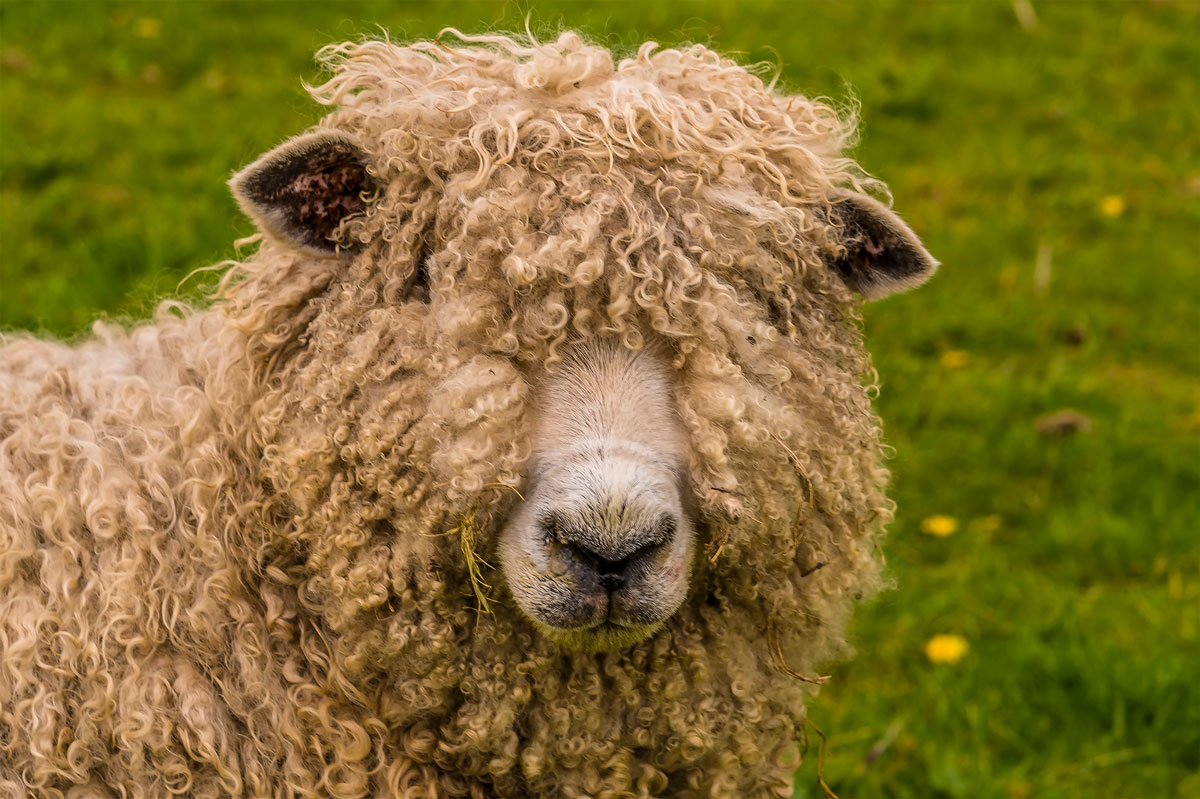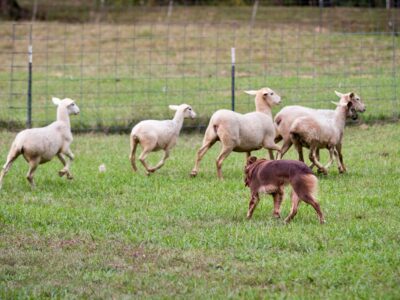If you’ve ever wanted to raise sheep for their fiber or wanted to learn how to naturally dye wool, you’re in the right spot. In this post, we’ll be discussing what you need to know about raising sheep, picking specific breeds and the care that they need, as well as what to know about harvesting and naturally dyeing wool.
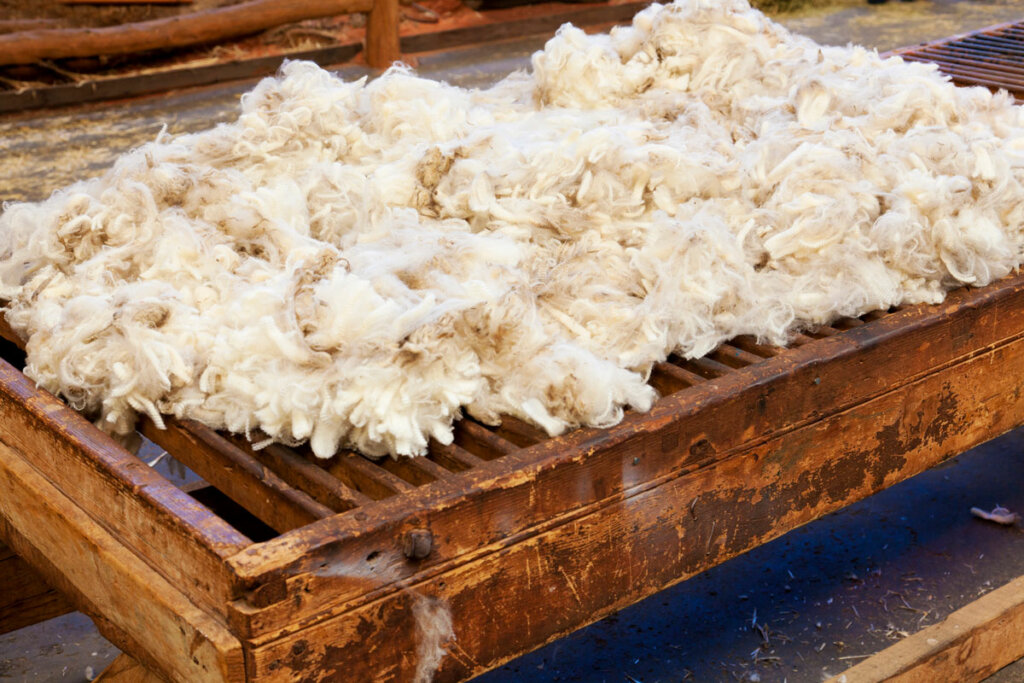
I’m so excited to be talking with Janet from Timbercreek Farms in this podcast episode. She is a dear friend of mine and I’ve actually stayed with her in her home. Janet has a flock of wooly sheep that are the backbone of their farm yarn business.
Over the last decade, Janet and her sheep have developed a line of natural yarns that they are very proud to offer to fellow crafters. From that beginning, a passion product line was developed that includes naturally dyed yarn, supplies, and all-inclusive kits.
She even has an online course for beginning natural dyers. She also shares a wealth of information at her blog, Timbercreek Farmer.
Below you’ll find all the details from my Pioneering Today Podcast interview with Janet (episode #321).
Dual Purpose Sheep Breeds
If you’re wanting to raise sheep for fiber, meat, and even milk, one would think it’d be a fantastic idea if one breed of sheep could do it all. However, there’s no one breed that will be great for all those purposes.
Janet suggests that before anyone invests in a dairy sheep to first taste some sheep milk and sheep cheese because it definitely tastes different than cow’s milk and even goat’s milk.
The closest thing to a dual-purpose breed would be an Icelandic sheep. They’re a dual-coated breed so you’ll be able to make some yarn, and they’re also a good meat breed. As far as the milking, they’re probably on par with any other sheep their size, but this is strictly based on Janet’s opinion and experience.
Those sheep that are meant for milk use their metabolism to go into producing milk, so their wool won’t be very good as fiber for yarn.
What Breeds are Best for Fiber
Sheep’s wool comes in many different thicknesses and “styles”. Shorter wool breeds will have a more dense fiber, longer wool sheep will have less dense, longer wool. Lincoln sheep, for example, will give you staples (or “locks”) up to 8 inches in length.
Medium staple lengths will come from breeds such a Finn. These locks are going to be about 5 inches in length.
Shorter length staples, from sheep like a Southbound, will be very short. Oftentimes too short to use with a fiber mill because it doesn’t get caught in the rollers in order to spin into yarn.
If you’re going to use a fiber mill to make your yarn, you have to use wool that has a long enough staple. This is so, as it goes through the mill process, the staple is long enough that the rollers can catch it. If not, the wool breaks off and can’t get turned into yarn.
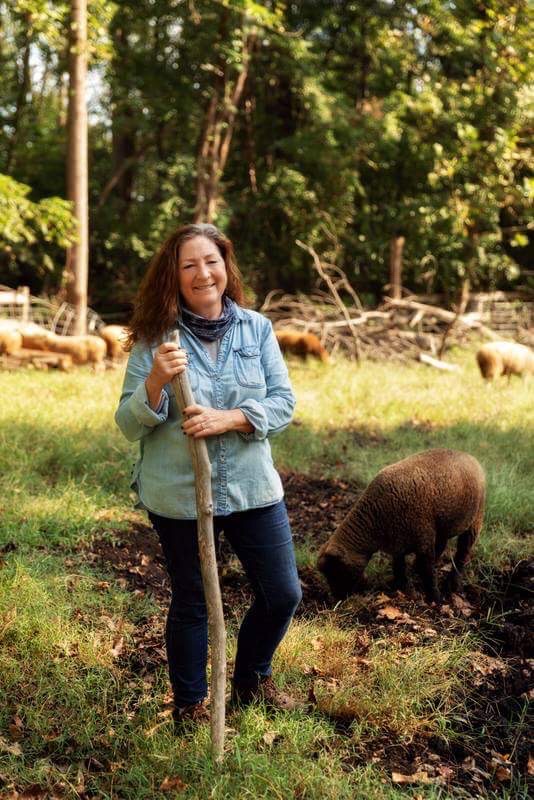
Size of Sheep
Keep in mind when raising sheep for their fiber that you want to keep sheep that are the right size for you to manage. If you’re raising sheep on your homestead, then you’ll likely be doing the sheering yourself, so keeping small to medium breeds is a better way to go.
A good-sized sheep for both wool and manageability is a Finn sheep.
How Much Acreage for Sheep
If you’re trying to raise sheep on a small lot, such as an acre, you’re going to realize how quickly they’ll deplete that grass. It’s a good idea to check with your local extension office to know, for your area, how much acreage you need per head of sheep.
This will vary based on your climate, rainfall, and how quickly your grass grows back.
It also depends on your rotational grazing practices. I recommend checking out this podcast interview I did with Joel Salatin on maximizing your homestead with regenerative agriculture practices.
Janet rotates her sheep every day or two and they still need to spend some time in a dry lot, feeding with hay, while the grass has time to recover.
Basically, if sheep overgraze an area of grass, it will take that grass longer to grow back and it won’t be as healthy.
Finally, if you’re dealing with a lot of acreage (or even if not!), you may want to listen to my podcast interview with Jordyn Kelly on farm dog breeds. We discuss both livestock guardian dogs and herding dogs.
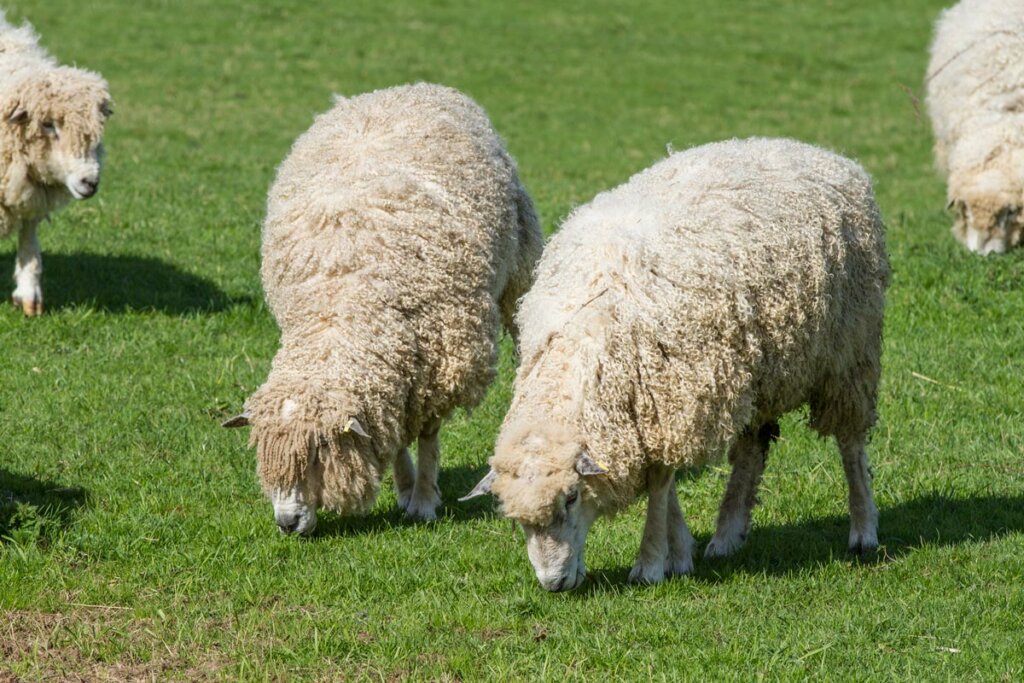
What to Feed Sheep
If you don’t have enough grass for your sheep to graze, or you’re headed into winter where your grass will be dormant, you’ll want to supplement with a good quality grass hay.
You shouldn’t need to supplement with alfalfa unless you’re breeding your sheep. Good grass hay will do in addition to as much fresh grass as your flock is able to get.
For tips on keeping animal feed costs down, check out Stocking Up on Animal Feed (+ How Much to Feed Animals).
Start Small
Janet recommends starting small to get used to having sheep. It’s easier to build up the fencing requirements for three sheep than it is for a flock of 20. Likewise, it’s easier to figure out feeding requirements, keeping the flock healthy from parasites, etc. when you’ve started with just a few.
You can always add more sheep! Starting small helps you “get your feet wet” without it being too overwhelming.
Sheep are more similar to a cow that’s grazing than a goat (learn more about raising goats here). But sheep want to go where there’s grass to graze on. So if your fencing isn’t sturdy, and there’s greener grass on the other side of the fence, they’ll figure out how to get through that fence.
So sturdy fencing is important, but it’s not as crucial as with goats.
Common Diseases and Health Issues with Sheep
Sheep are susceptible to parasites, much like goats and other grazers. By keeping a small flock it’s easier to be in contact with each animal every day to check in with their needs and to monitor their health or changes in behavior, etc.
You can check to see if an animal is becoming anemic (one sign they might be dealing with parasites) by checking their inner eyelid color. The whiter the eyelid the more anemic the sheep, the pinker the eyelid, the better blood circulation they have.
There’s a FAMACHA chart that helps you monitor the color of your goat’s eyelids to see the amount of blood circulating in their body.
Natural Remedies vs. Non-Natural
Janet gives a good word of warning by saying that natural remedies and practices are great for helping keep your flock healthy and preventing diseases and parasites, however, using herbal remedies to help cure a large parasite load usually doesn’t end up working in the end.
You may want to ask yourself if you’re ok using a chemical de-wormer in order to save your sheep before venturing down this avenue of homesteading.
We’ve actually experienced this ourselves with a cow who needed antibiotics, and even though we weren’t happy with needing to go this route, it was necessary to save the cow’s life.
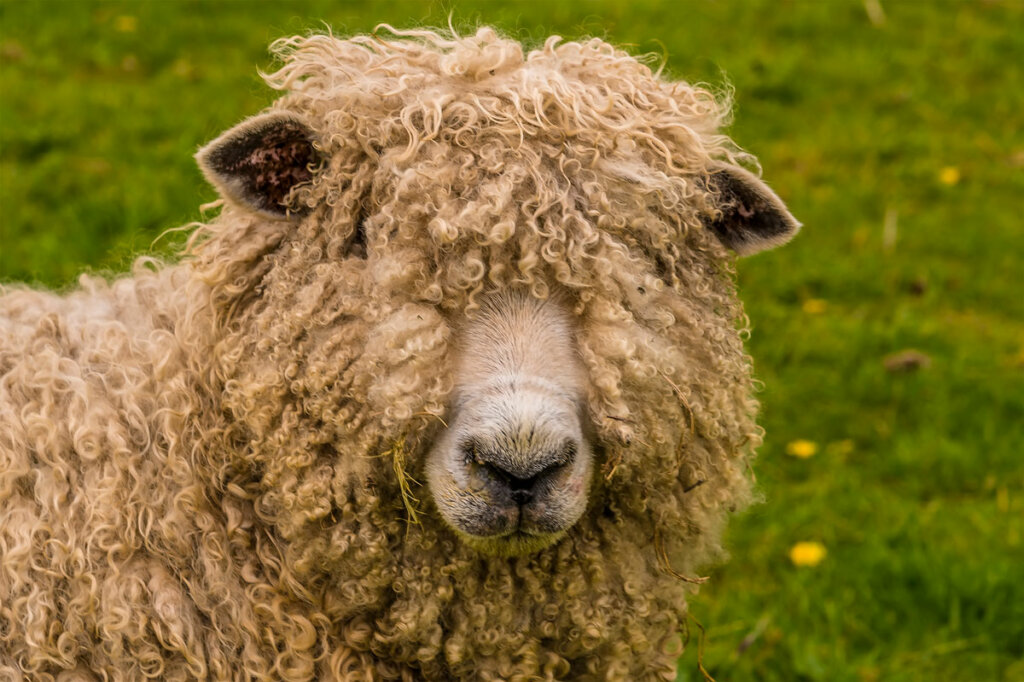
How Much Fiber Does One Sheep Produce?
Each mature Finn sheep will produce approximately 5-8 pounds of raw fleece. You’re going to, of course, have to clean out the parts of the wool that are not usable for yarn and use that for another purpose.
From that eight pounds of raw fleece, you’ll probably send about five or six pounds to the mill. You only want to send the best quality, otherwise, they’re just going to reject it.
From here it depends on the yarn that you want (one-ply, two-ply, three-ply, etc.).
If you have three Finn sheep, you’ll likely be able to get enough fiber to make a few garments or blankets.
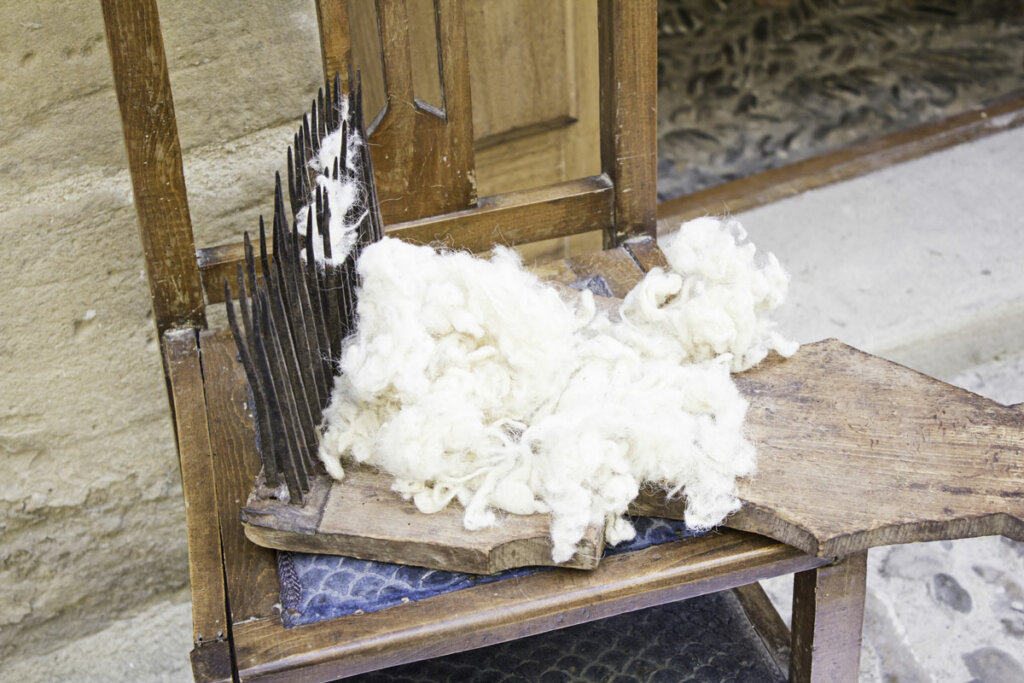
How to Clean Wool
There are multiple processes to cleaning the wool. The first step is called skirting and the second step is where you’ll actually clean and sanitize the wool.
Skirting
Once a sheep is shorn (or the fleece has been cut from the animal) you’ll need to clean the fleece, or more accurately, remove any unclean areas.
The process of cleaning raw fleece is known as skirting. This is removing fleece that has come into contact with things like urine and feces, or areas that have contact with dirt or the ground such as the stomach and lower leg areas. Typically speaking, you’ll remove most of the edges of your fleece.
Uses for Skirted Wool
Janet gives us some fabulous ideas for how to use skirted wool. One I’m especially intrigued by is using it as ground cover in the garden.
Ground Cover
Wool is naturally insulating, but it also retains moisture while still being able to breathe. Once wool gets saturated with water it holds onto that moisture and acts like a dripline.
Wool could be a great option for using as “mulch” around your garden plants to suppress the weeds, help the soil retain moisture, and eventually, the wool will break down and add organic material and nutrients to the soil.
Insulation
If you want to use the skirted wool as insulation, say for your home or otherwise, you’ll want to clean it first. Follow the instructions for how to clean wool above.
Felting
Those pieces of fleece that are too short to turn into yarn can be used for projects like felting.
Whenever you’re doing something on your homestead, there are always byproducts and as modern-day pioneers, we want to be sure we’re utilizing all the parts of a product! Get creative!
Cleaning Skirted Wool
First scour the wool by washing it in hot water, then rinsing, washing in hot water, then rinsing until the wool is fairly clean.
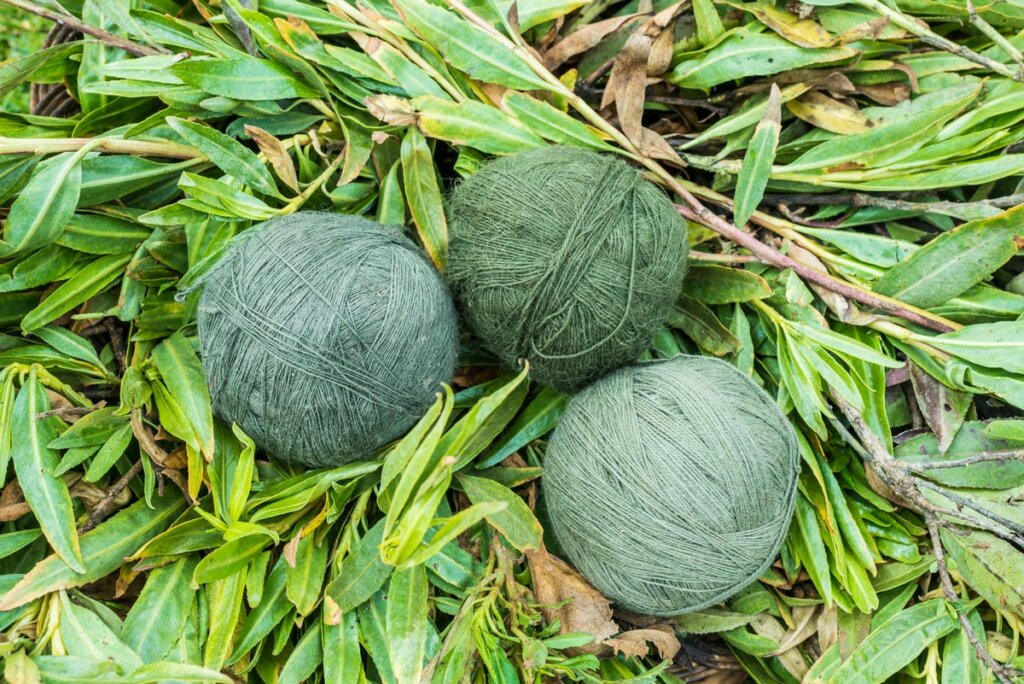
Naturally Dyeing Wool
There is a lot of yarn that you can go and buy, but there are very few options that you can get that have been naturally dyed with colors from nature.
Natural Reds
There are many plants that will naturally dye yarn. So many of us fear the stains that can happen from things like chokeberries or elderberries, but these make fantastic naturally dyed red yarns in various hues, as do flowers such as zinnias, marigolds, etc.
Natural Yellows
If you’re reading this post, chances are you love dandelions for their many purposes just as much as Janet and I do, but the dandelion flowers also make a great natural dye.
Natural Greens
There are many natural green options as that’s the most prolific color most of us have in our area. Plants such as purple dead nettle and wild mint make beautiful hues of green.
Herb Garden
When you’re looking for natural dyes, just go out to your herb garden! So many herbs and flowers work well for dyes. Janet says when her herb garden gets overrun, she just cuts it back and uses them for dyes.
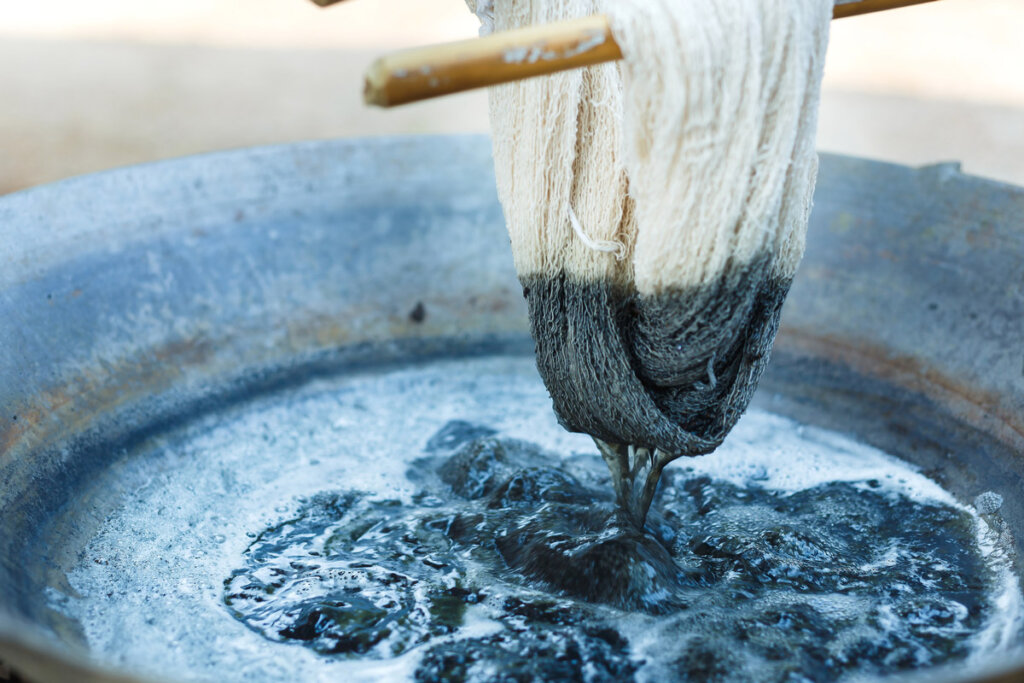
A Basic Dye Pot
Janet’s recommendation when dyeing yarn is to soak the yarn overnight in a solution of alum (aluminum sulfate) and cream of tartar. Do this by bringing the solution up to a boil, add your yarn and let it boil for 30 minutes, then turn the heat off and let it sit in the solution overnight. This will allow the yarn to better receive the color of the dye.
The next day, make your dye pot by adding enough water to cover your yarn and your herbs, flowers, or berries. Turn the heat up to medium-low, don’t allow the water to come to a boil or it can dull the colors*. Steep the herbs, flowers, or berries in the water for 45 minutes or until the desired hue is obtained then add your yarn (different colors will develop slower or faster).
Add your yarn into the dye pot and watch the color. Once you like the color you see, you can remove it from the pot.
Allow it to drip dry just a bit and then let it cool down and dry out just a bit before washing the yarn in cool-tepid water with a bit of wool shampoo.
*It depends on the plants you’re using for the heat you use.
Find Janet
You can find Janet multiple places online, here are some of the things you should definitely check out:
[fusebox_transcript]
Related Articles You May Enjoy
- A Guide to Raising Goats (for Meat & Dairy)
- Planning Your Livestock for a Year’s Worth of Meat (Per Person)
- Raising Backyard Meat Chickens
- 10 Tips on Raising Chickens for Meat
- Raising Meat Chickens for Profit
- Raising American Guinea Hogs
- American Guinea Hogs – Were They Worth It?
- 12 Tips on How to Raise Pigs for Meat
- Everything You Need to Know About Raising Rabbits for Meat
- Creating a Homestead Business that Makes Money
- Maximizing Your Homestead for Profit & Production (With Joel Salatin)
